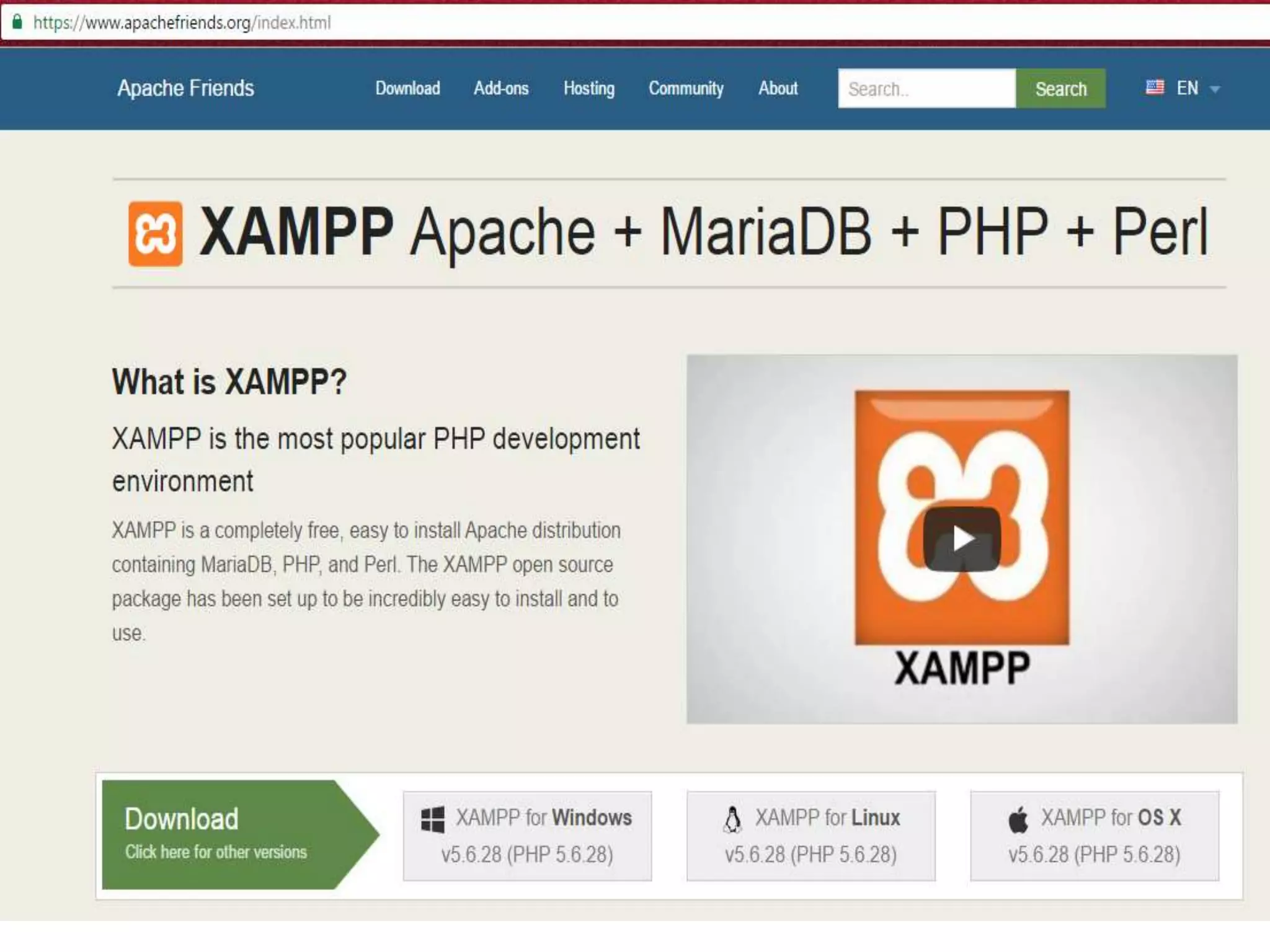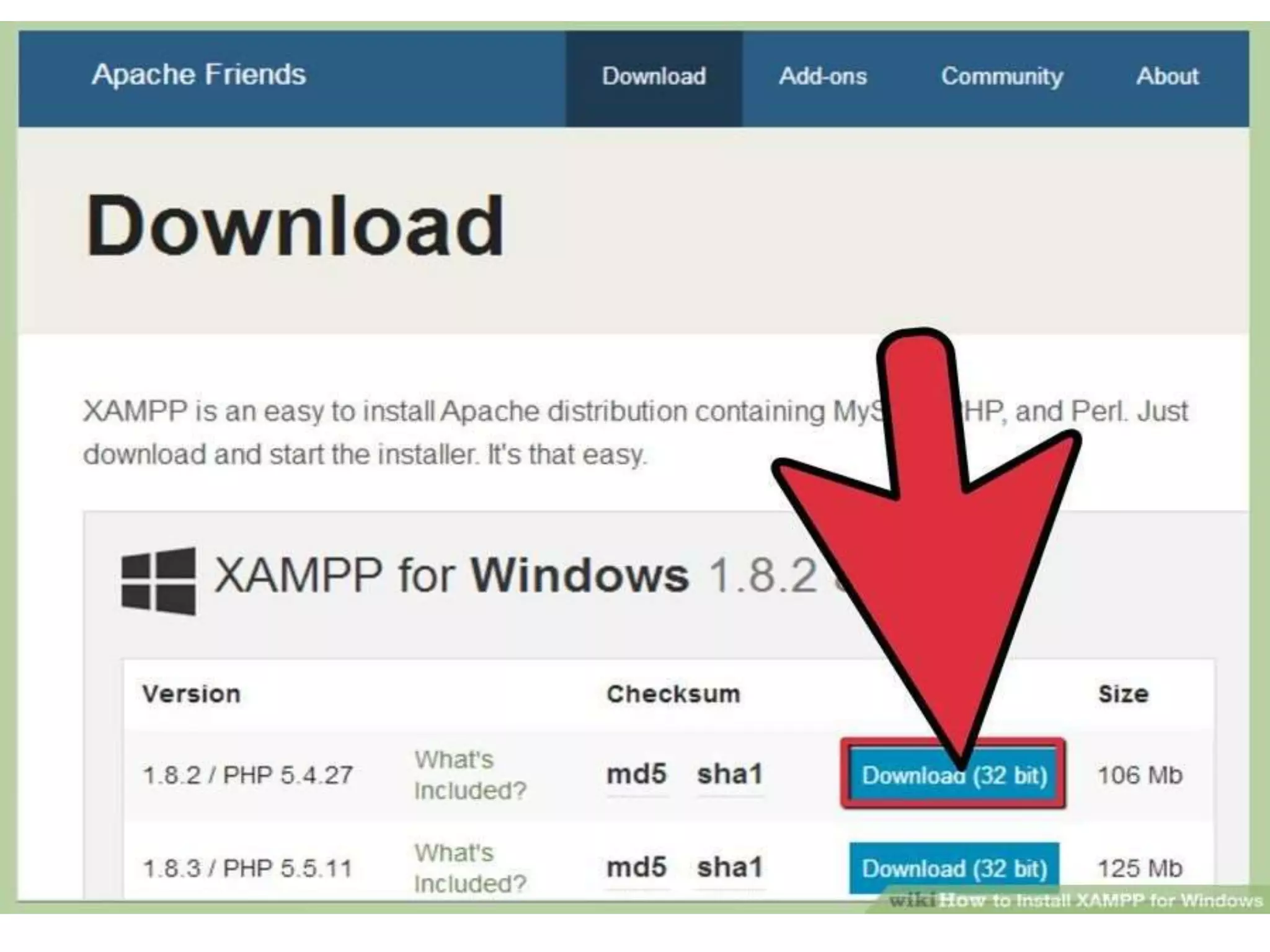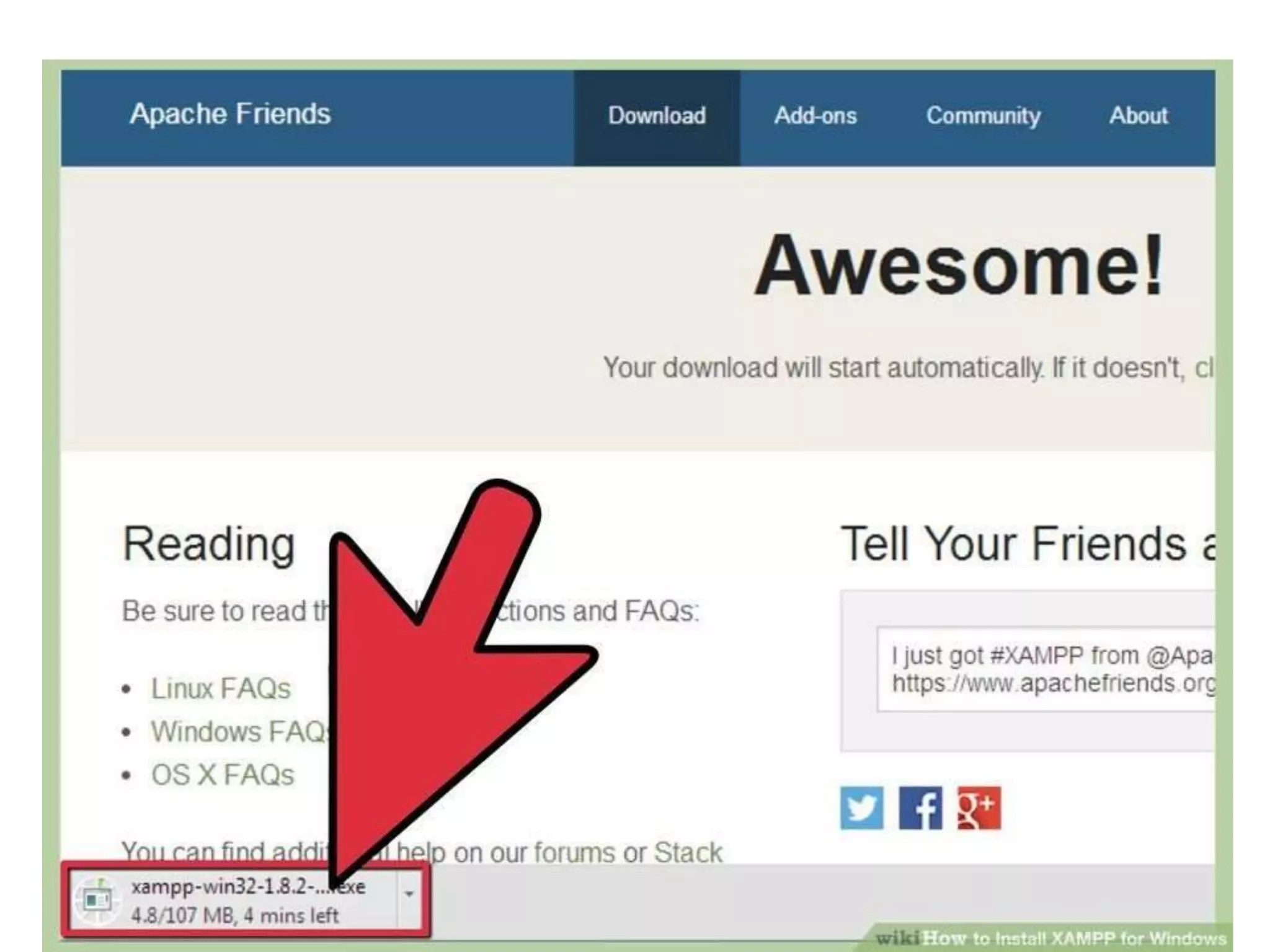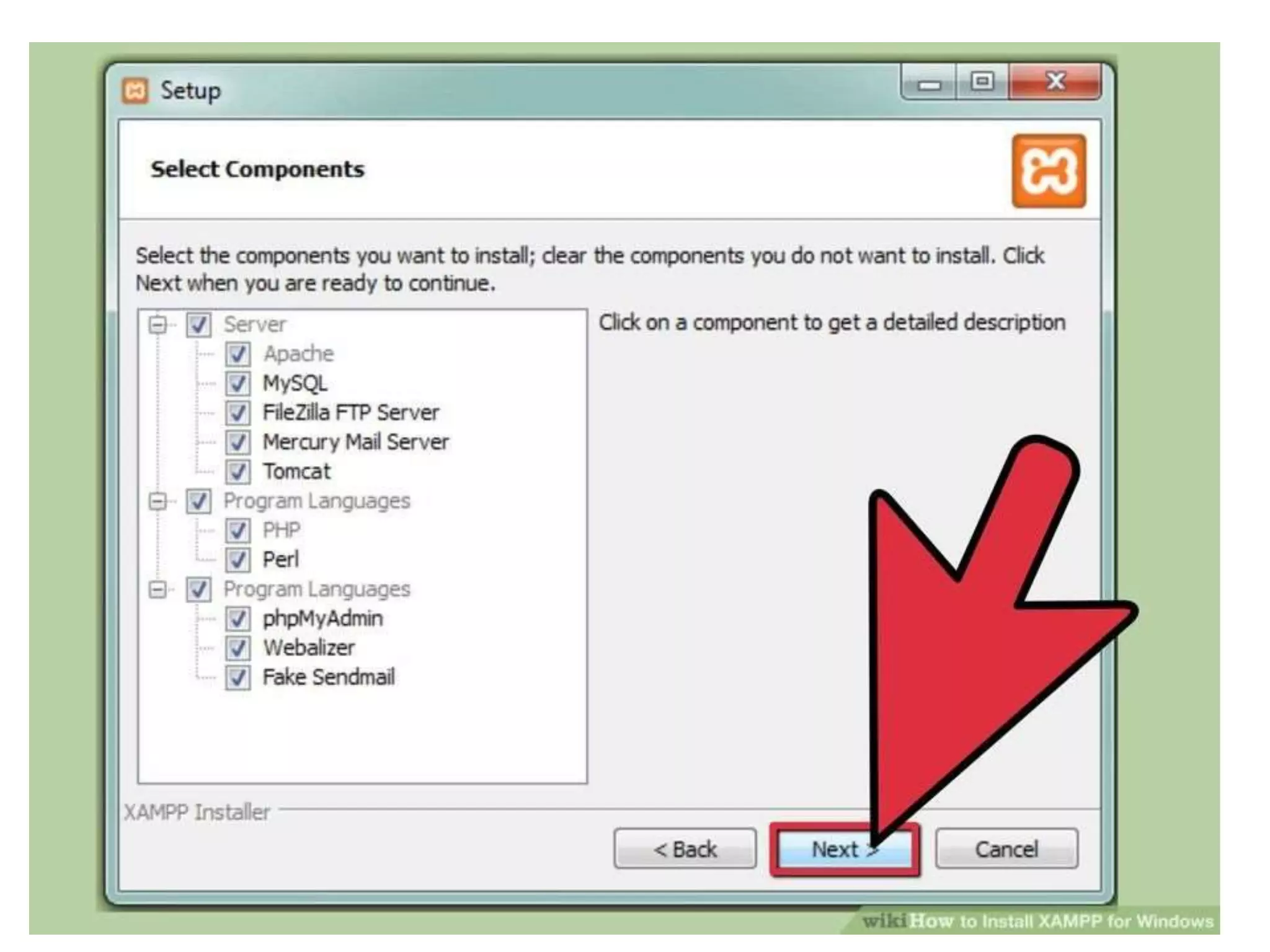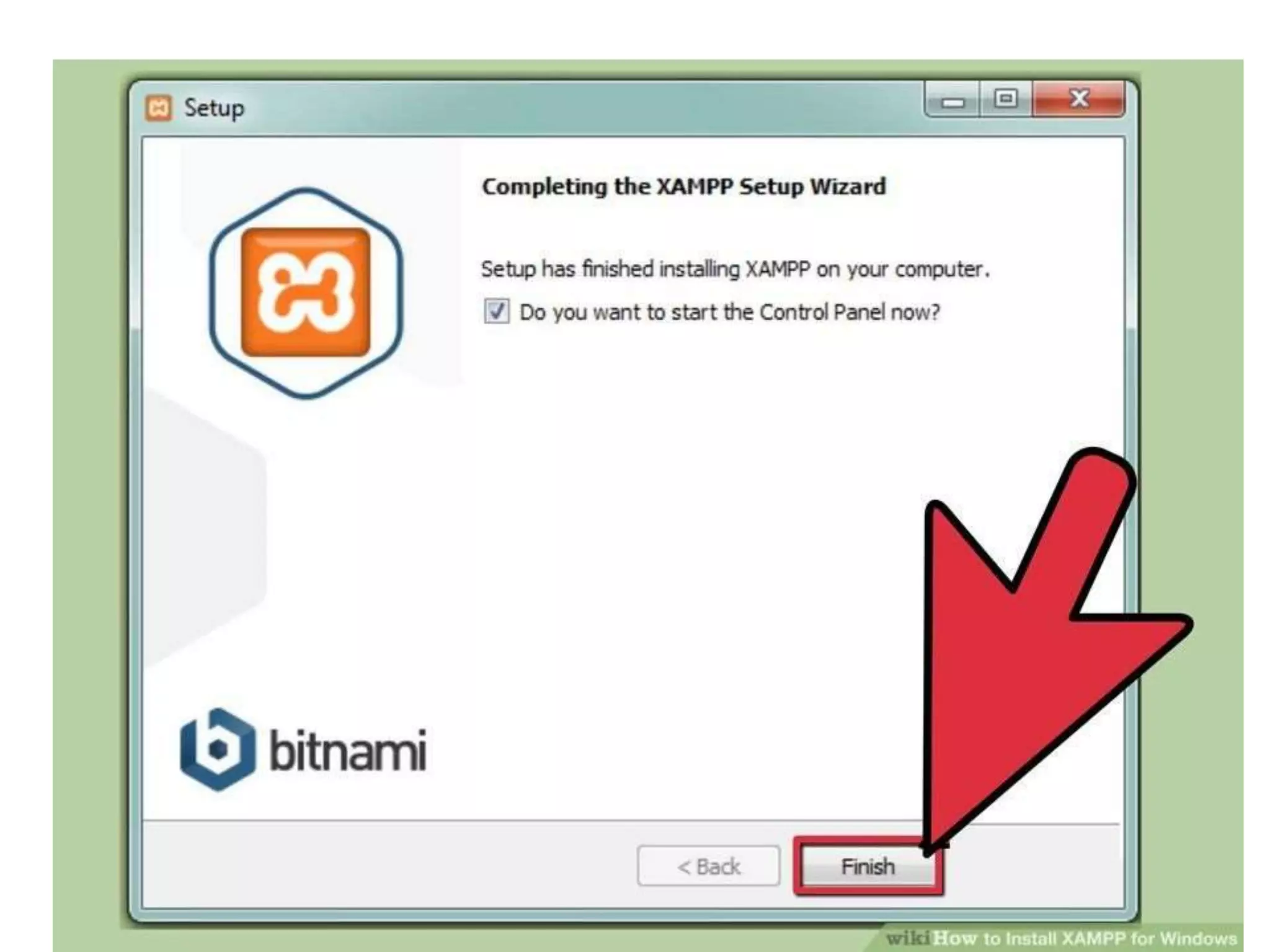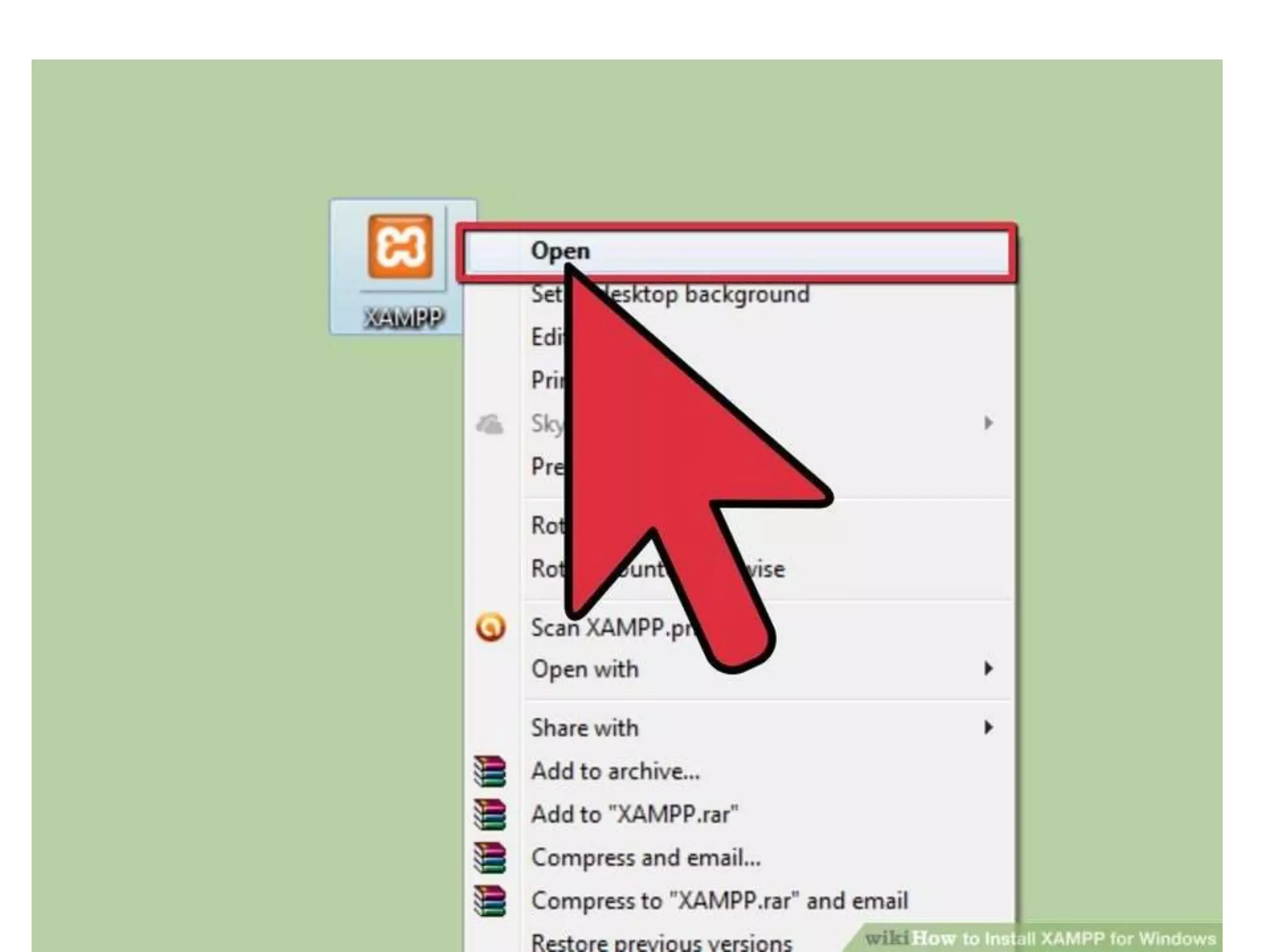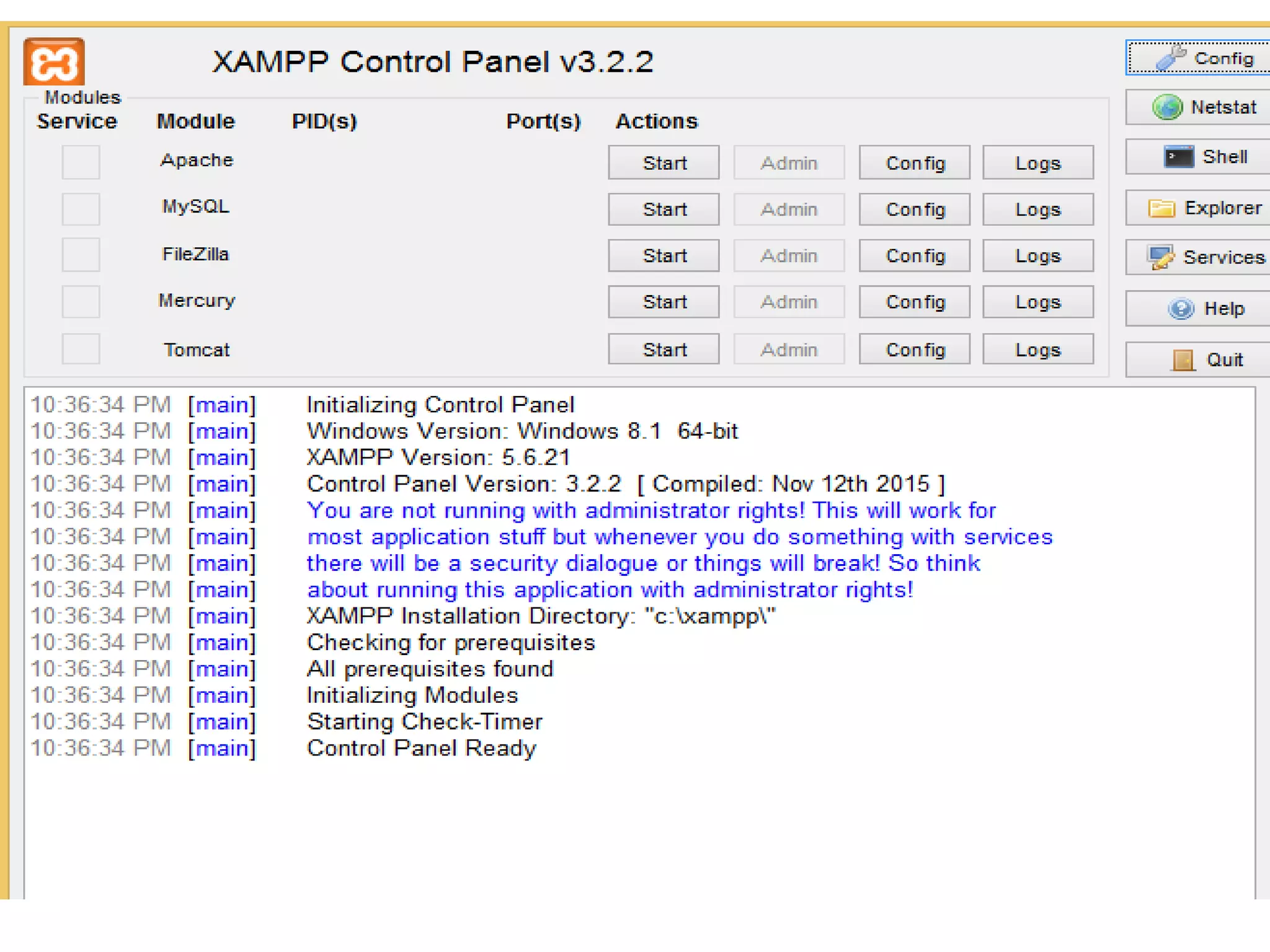This document provides an introduction and overview of PHP, including:
1. PHP is an open-source scripting language used for web development that allows developers to add dynamic content to websites. It can be embedded into HTML and is commonly used to create dynamic websites.
2. Key features of PHP include that it is free, runs on most web servers, and supports a wide range of databases. It allows developers to generate dynamic page content, collect form data, and more.
3. The document discusses PHP syntax, variables, embedding PHP code in web pages, and outputting data through functions like print(), echo(), and sprintf(). It provides examples of how to write PHP code and integrate it into HTML
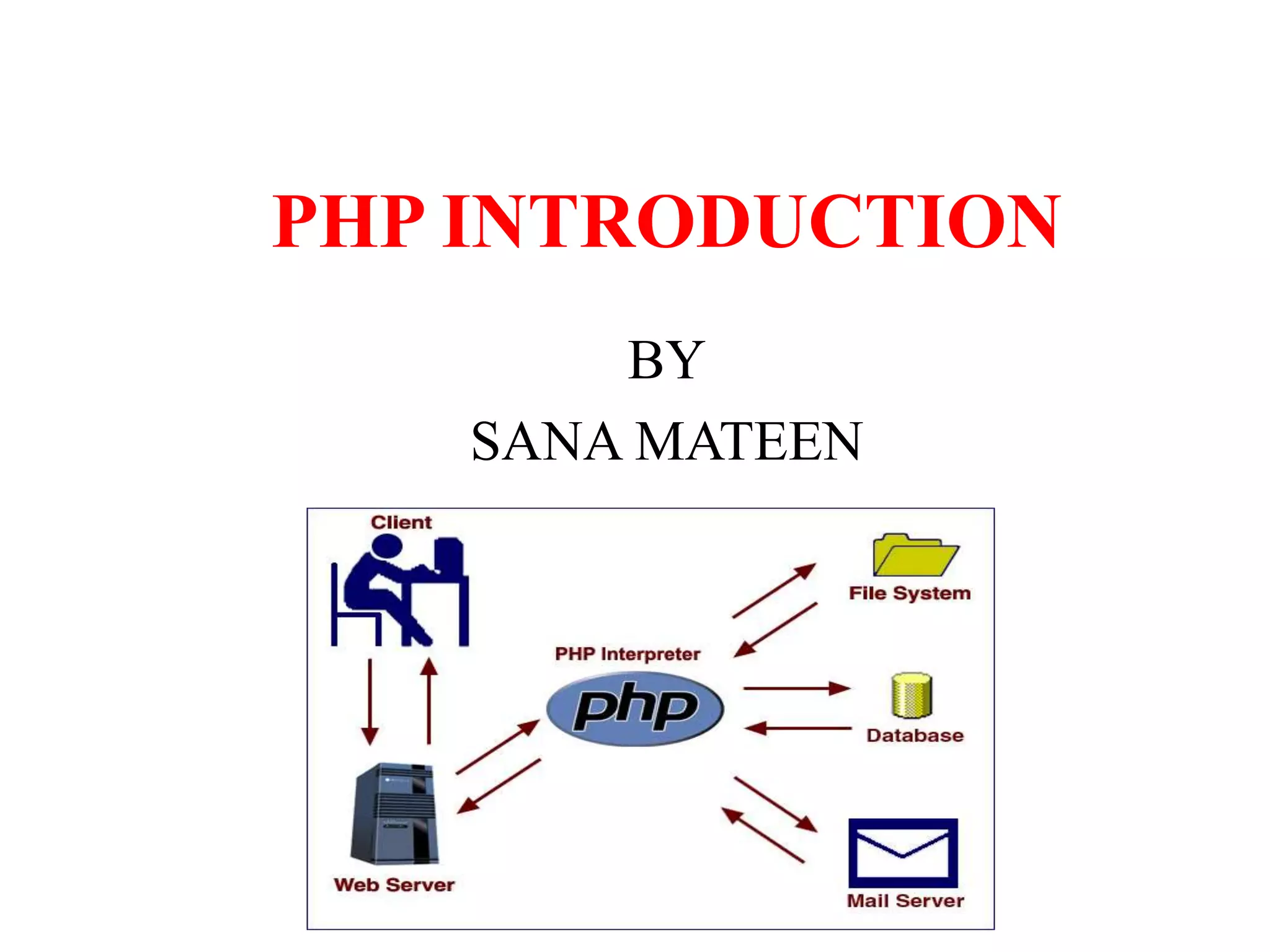
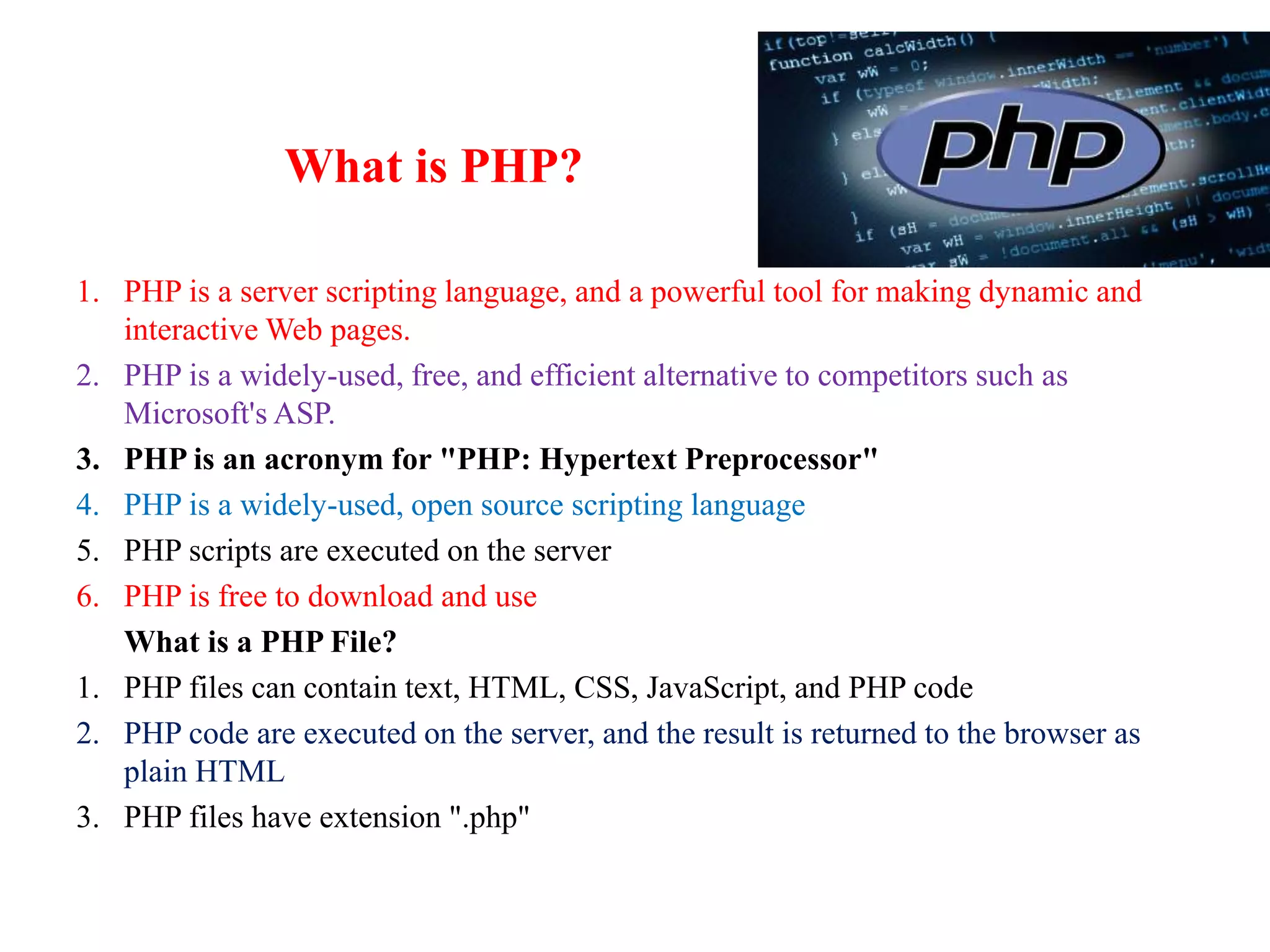

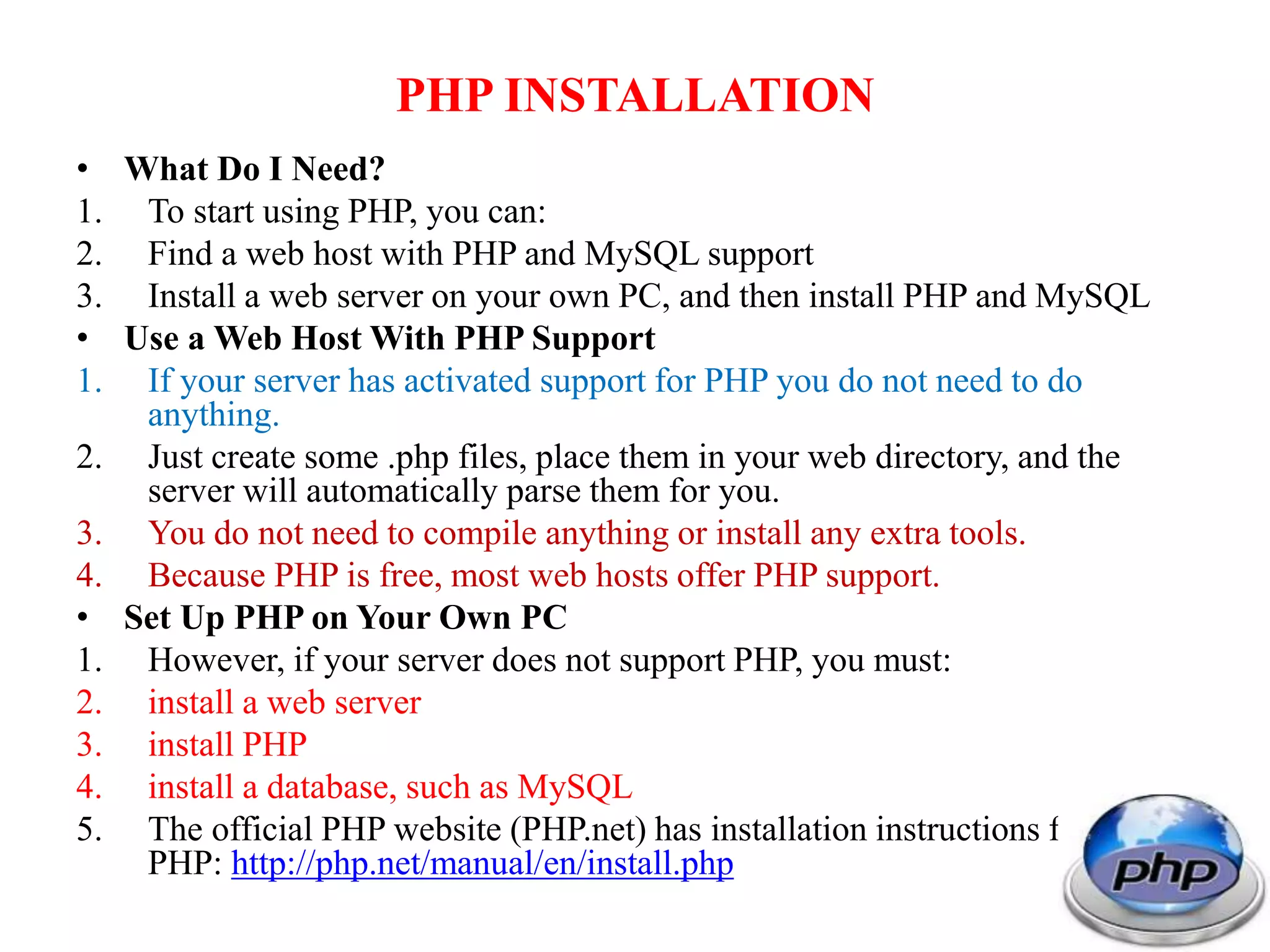
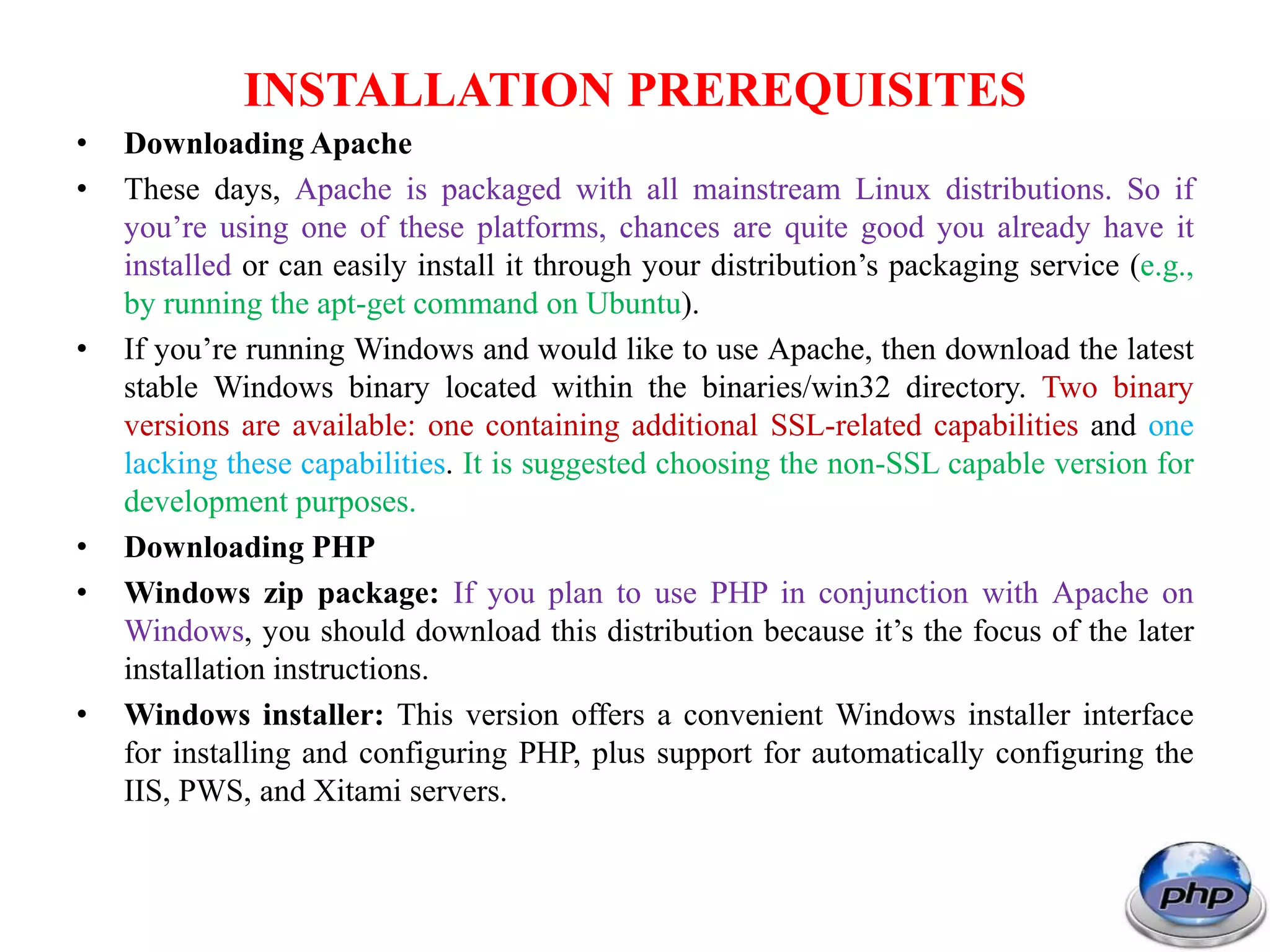
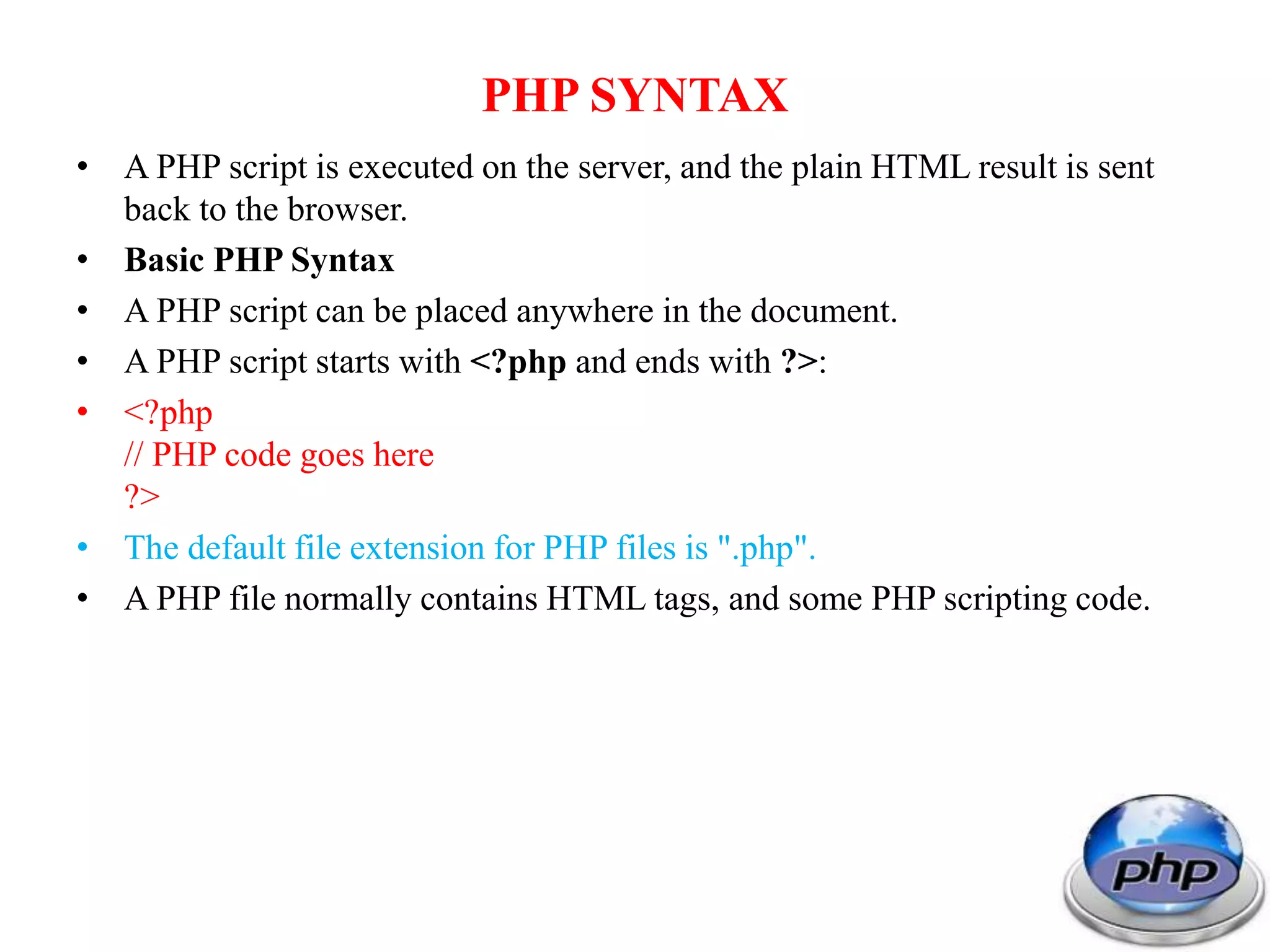
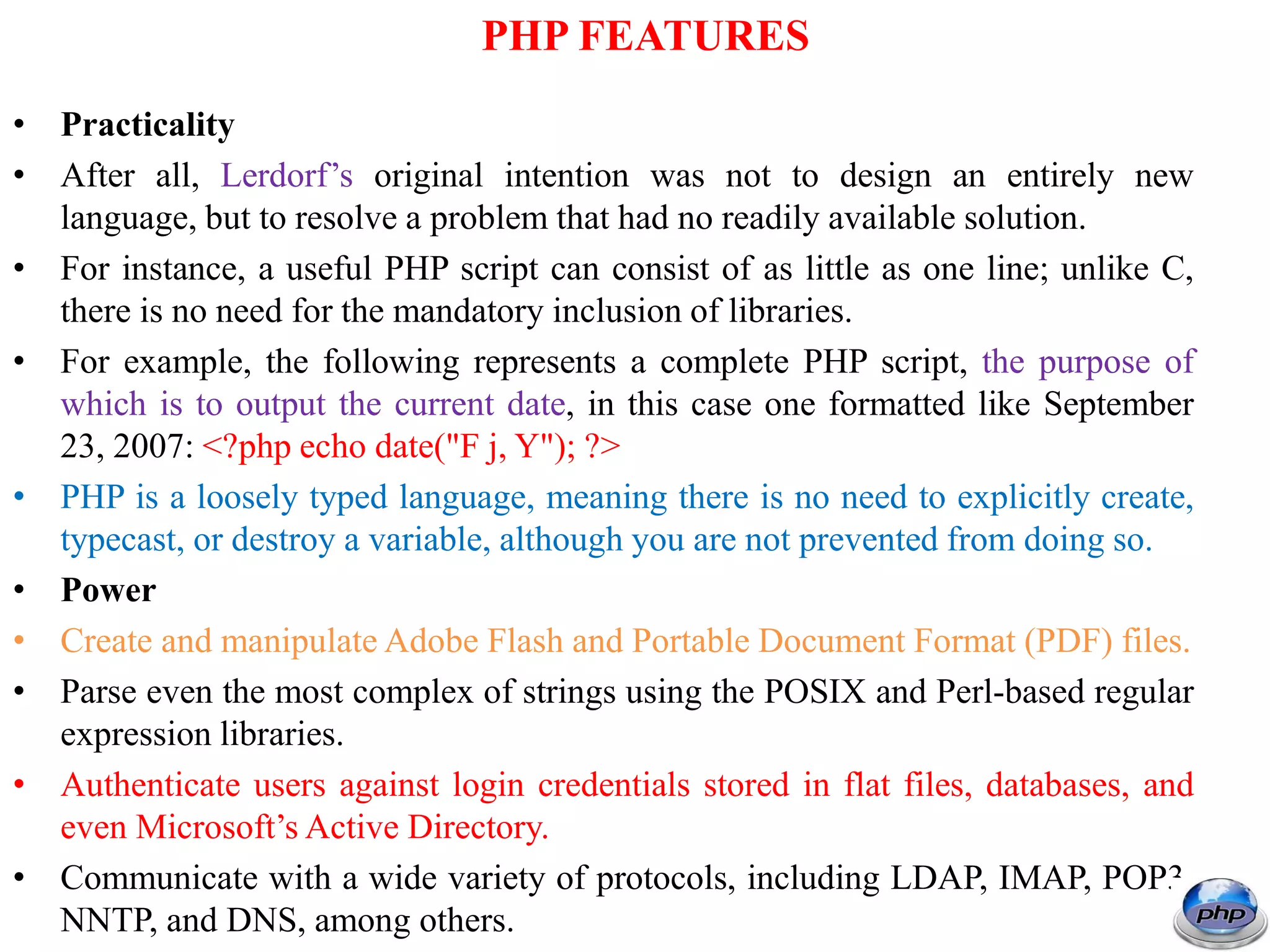
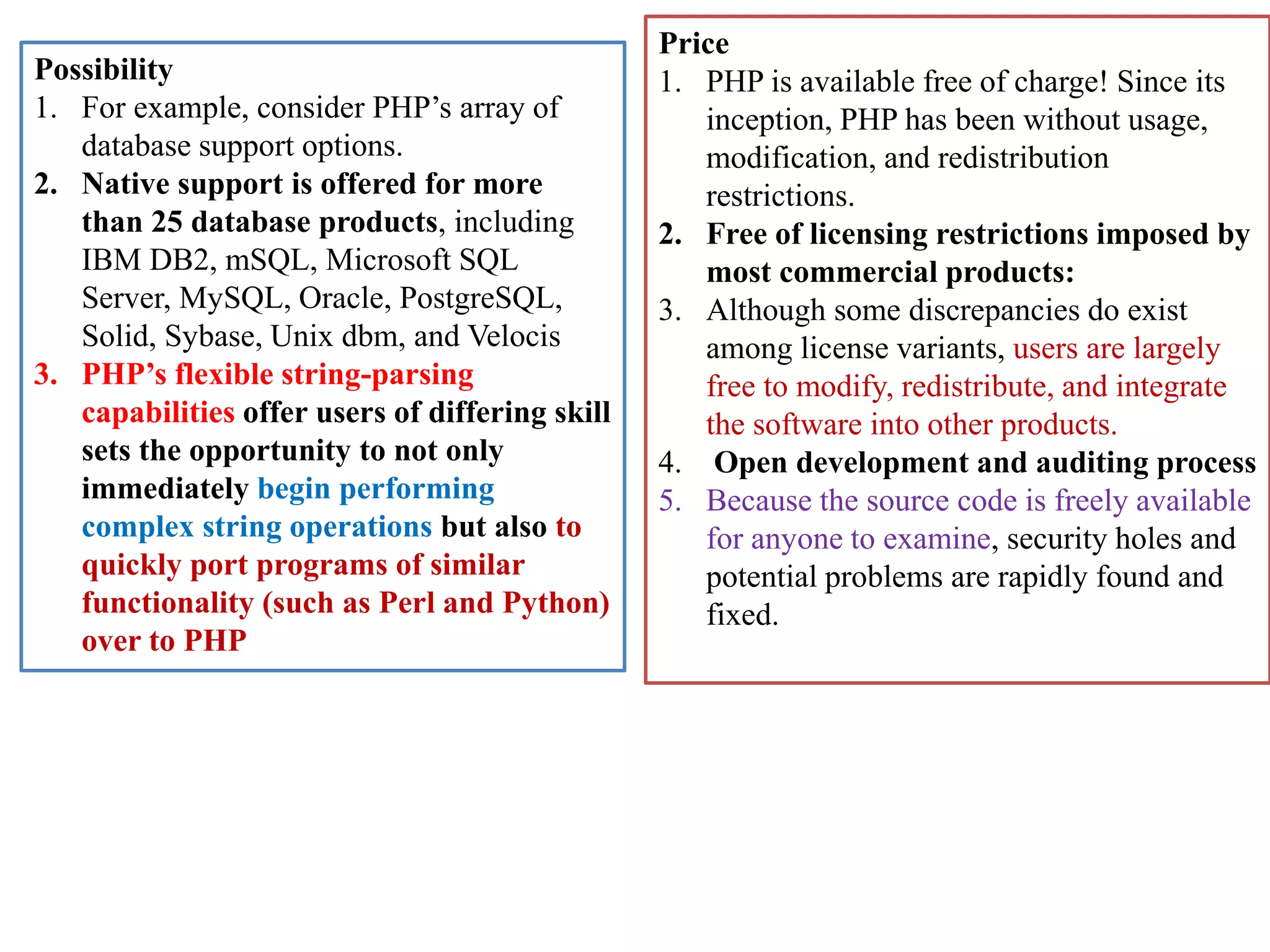
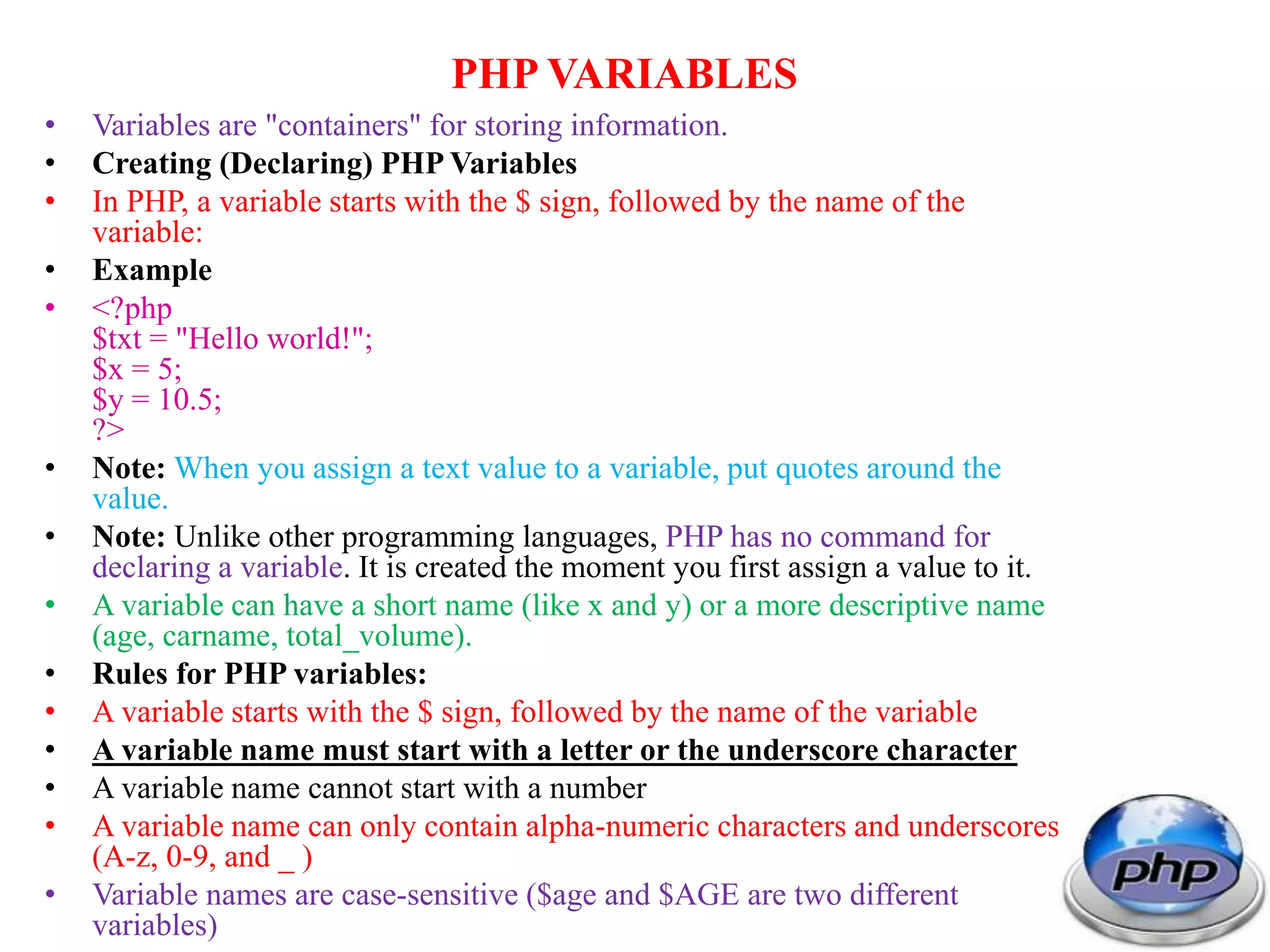
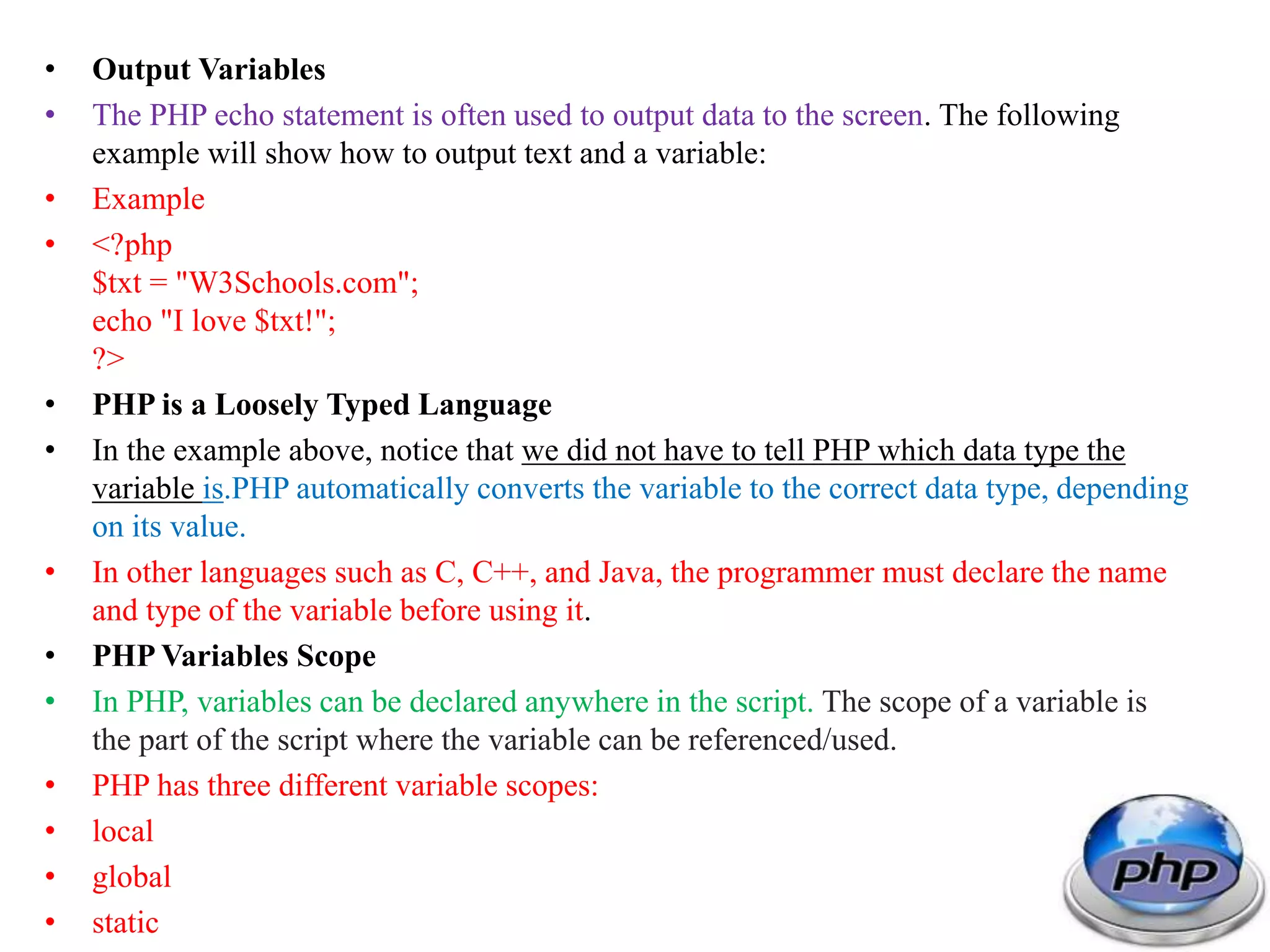
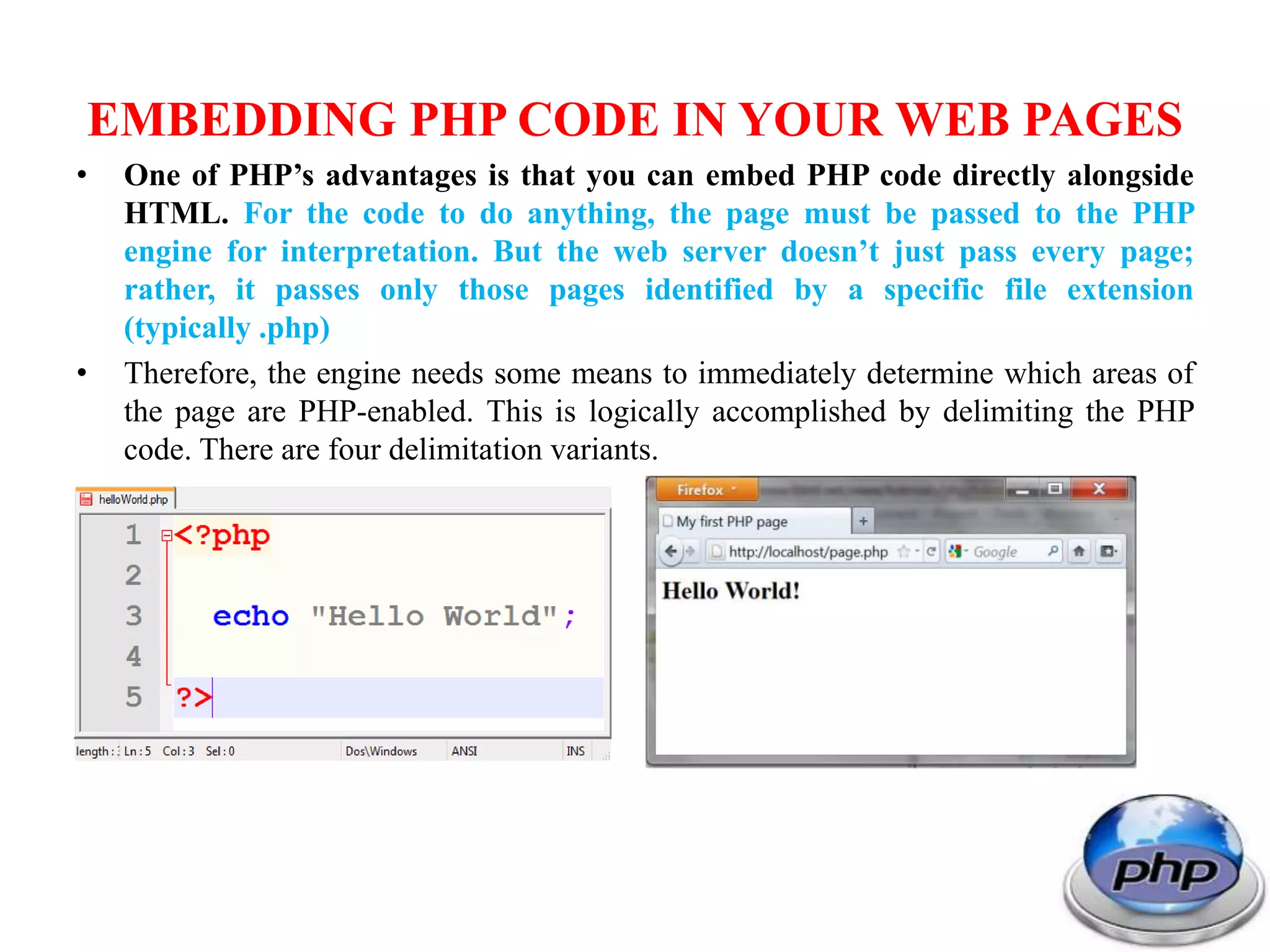
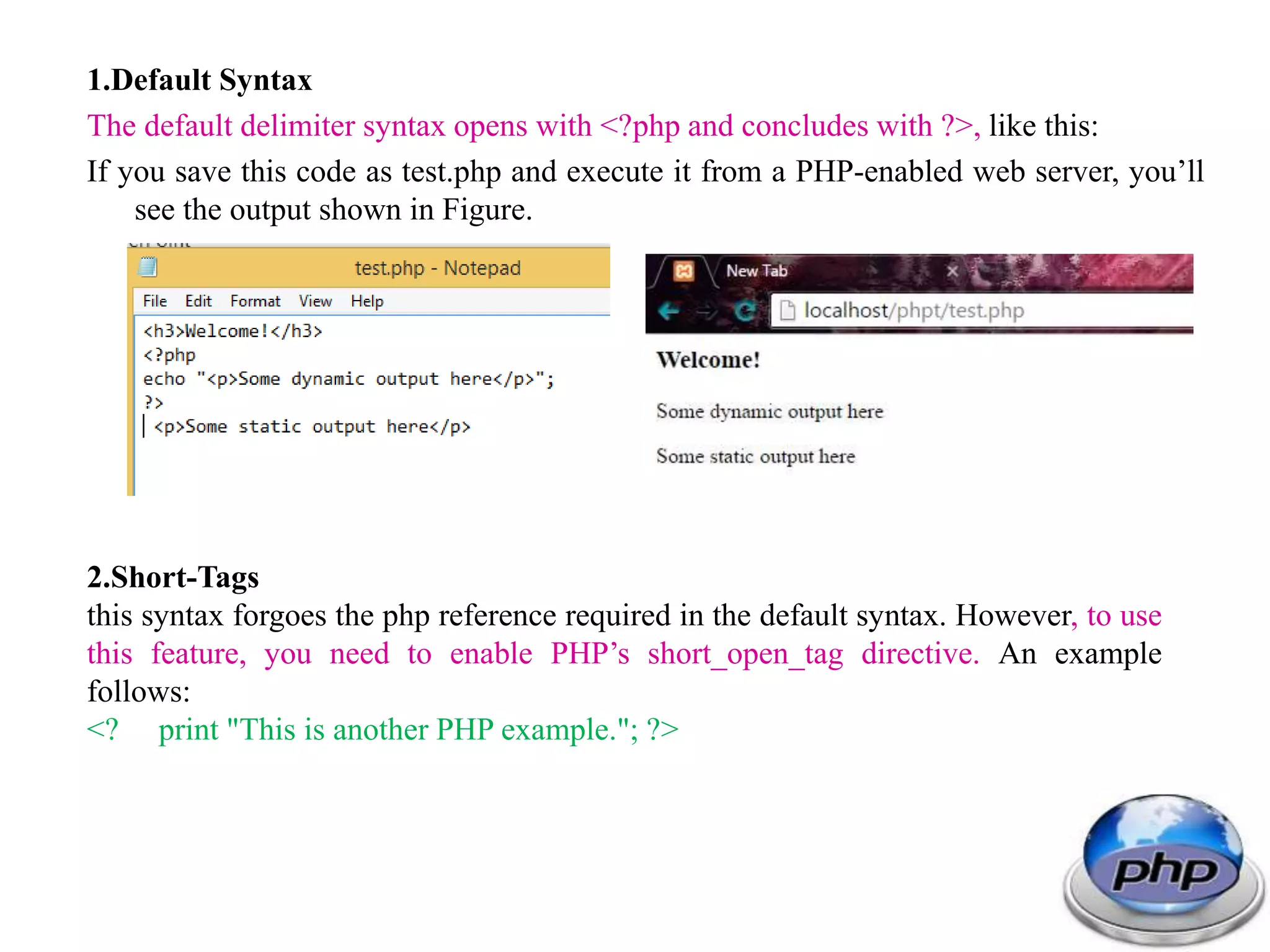
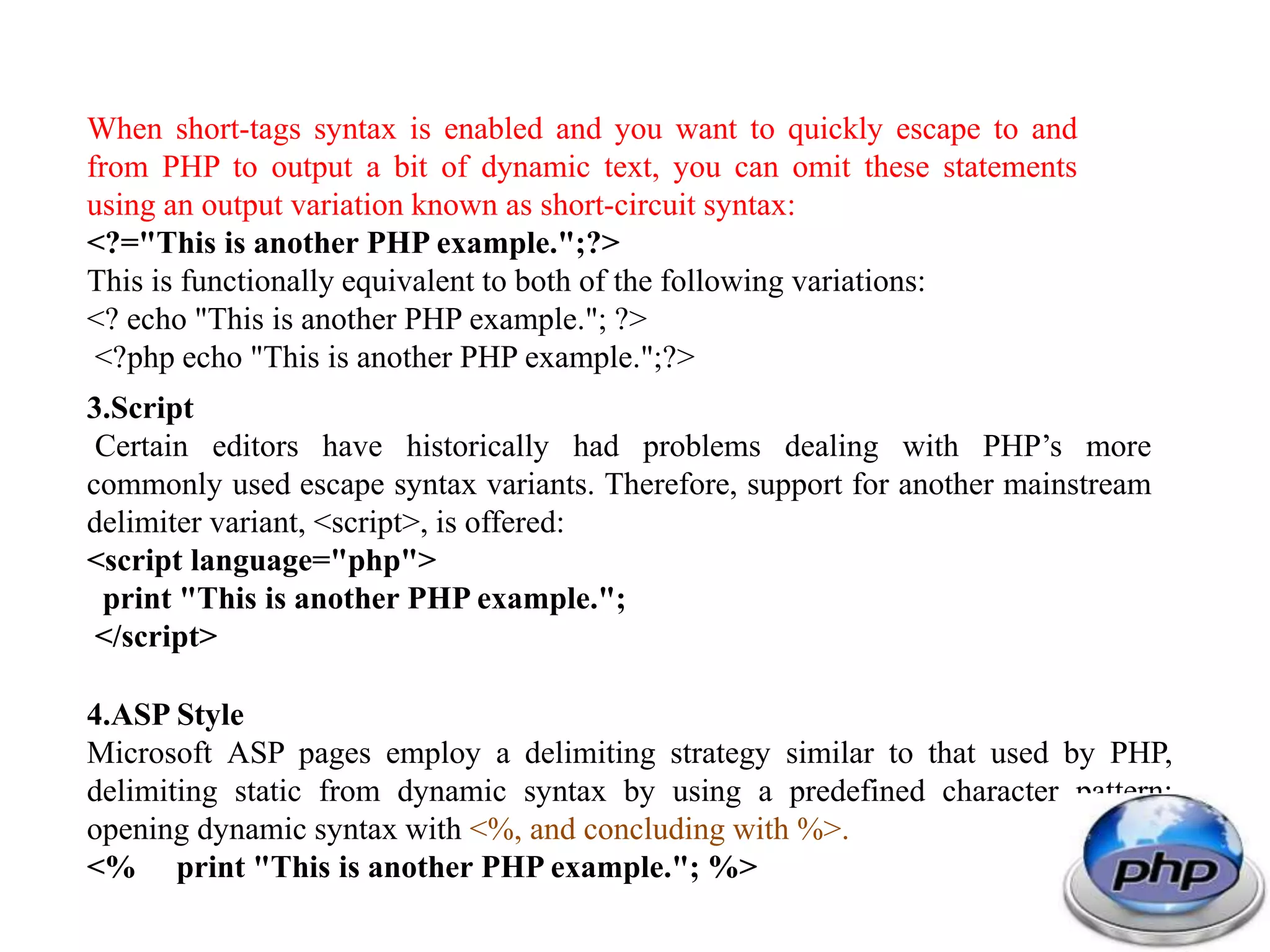
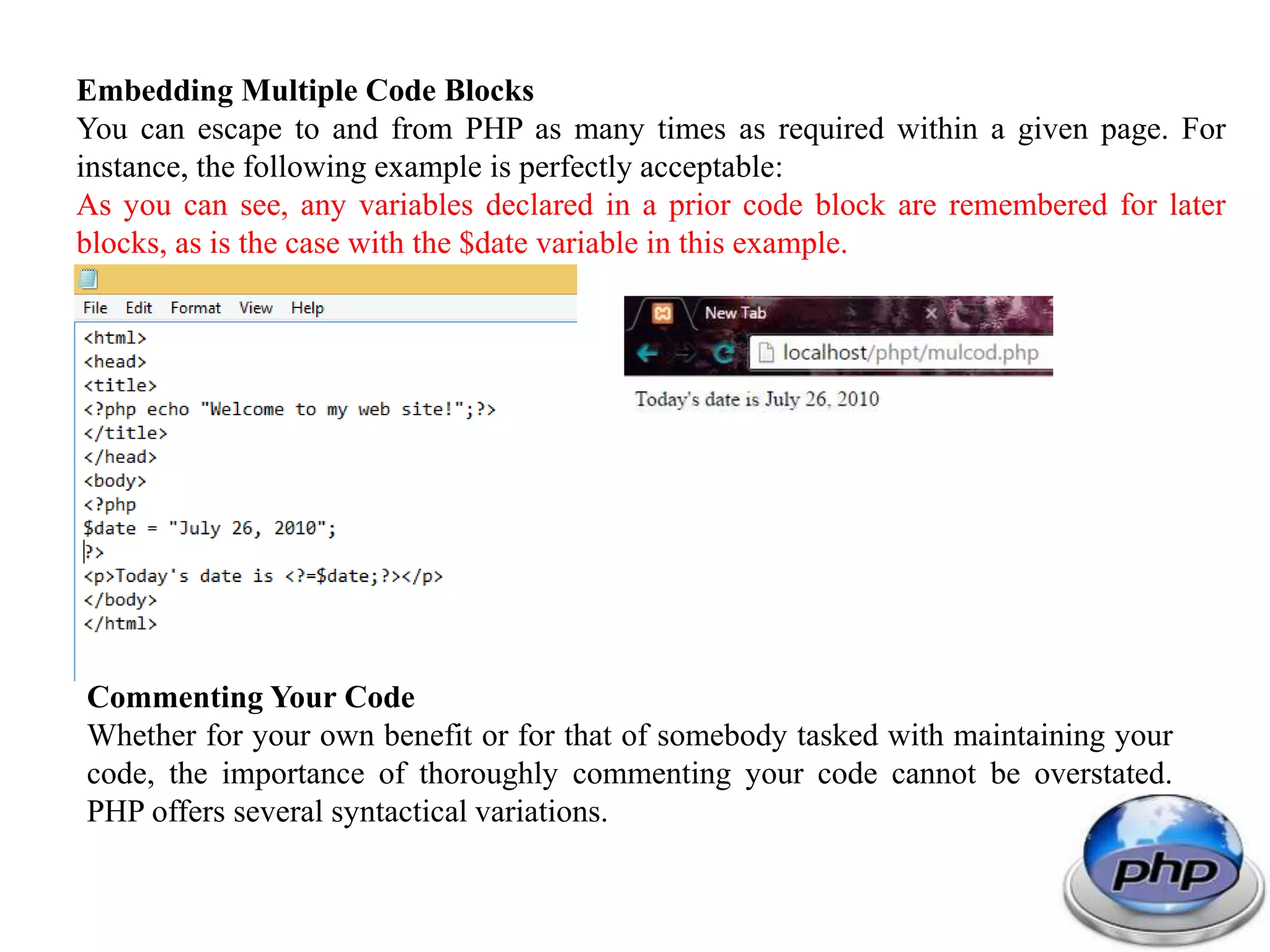
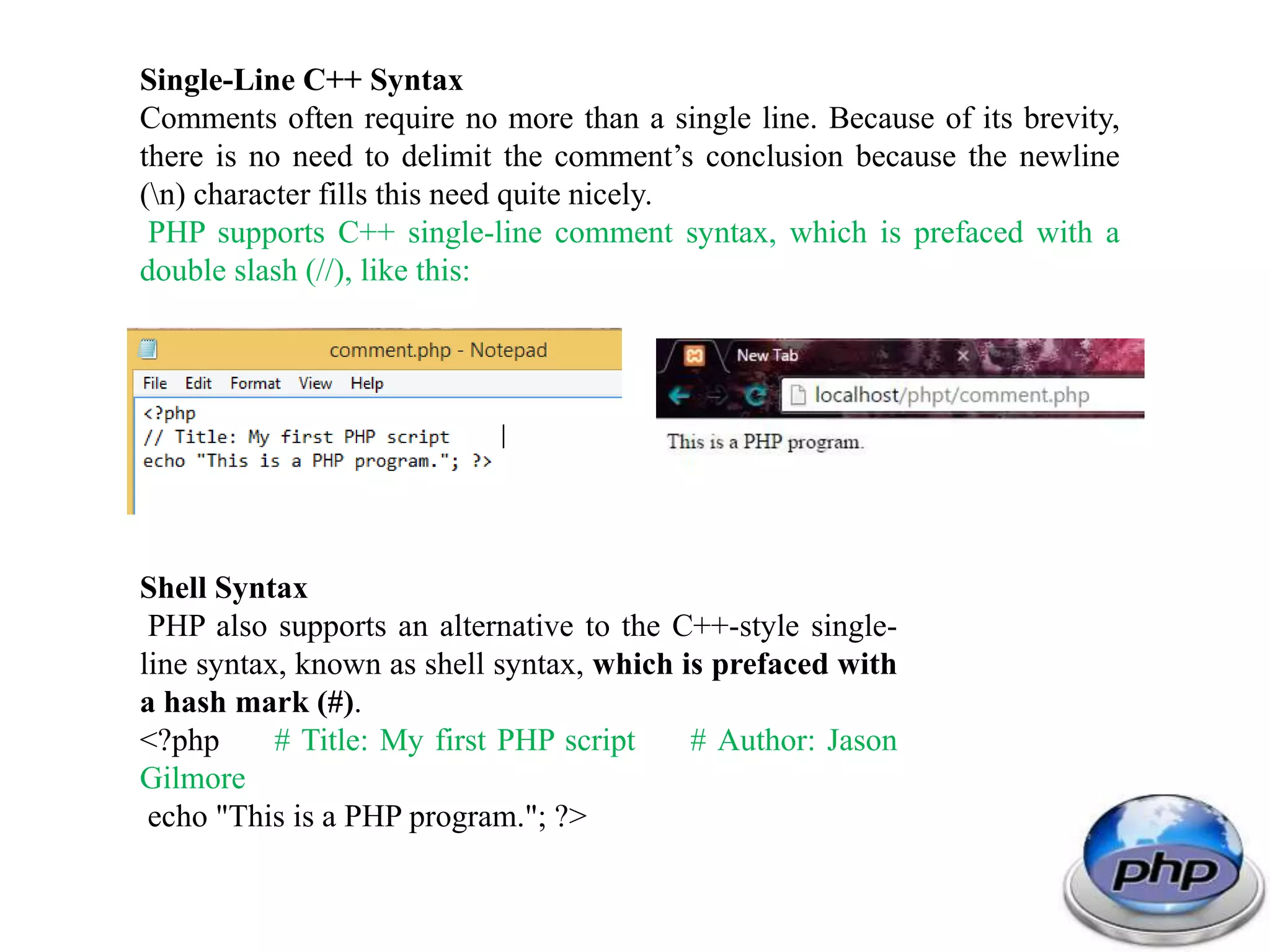

![The echo() Statement
Alternatively, you could use the echo() statement for the same purposes as print().
echo()’s prototype looks like this:
void echo(string argument1 [, ...string argumentN])
To use echo(), just provide it with an argument just as was done with print():
echo "I love the summertime.";
Here’s an example:
The sprintf() Statement
The sprintf() statement is functionally identical to printf() except that the output is
assigned to a string rather than rendered to the browser. The prototype follows:
string sprintf(string format [, mixed arguments])
An example follows:
$cost = sprintf("$%.2f", 43.2); // $cost = $43.20](https://image.slidesharecdn.com/phpintro-171203081540/75/Php-intro-17-2048.jpg)
